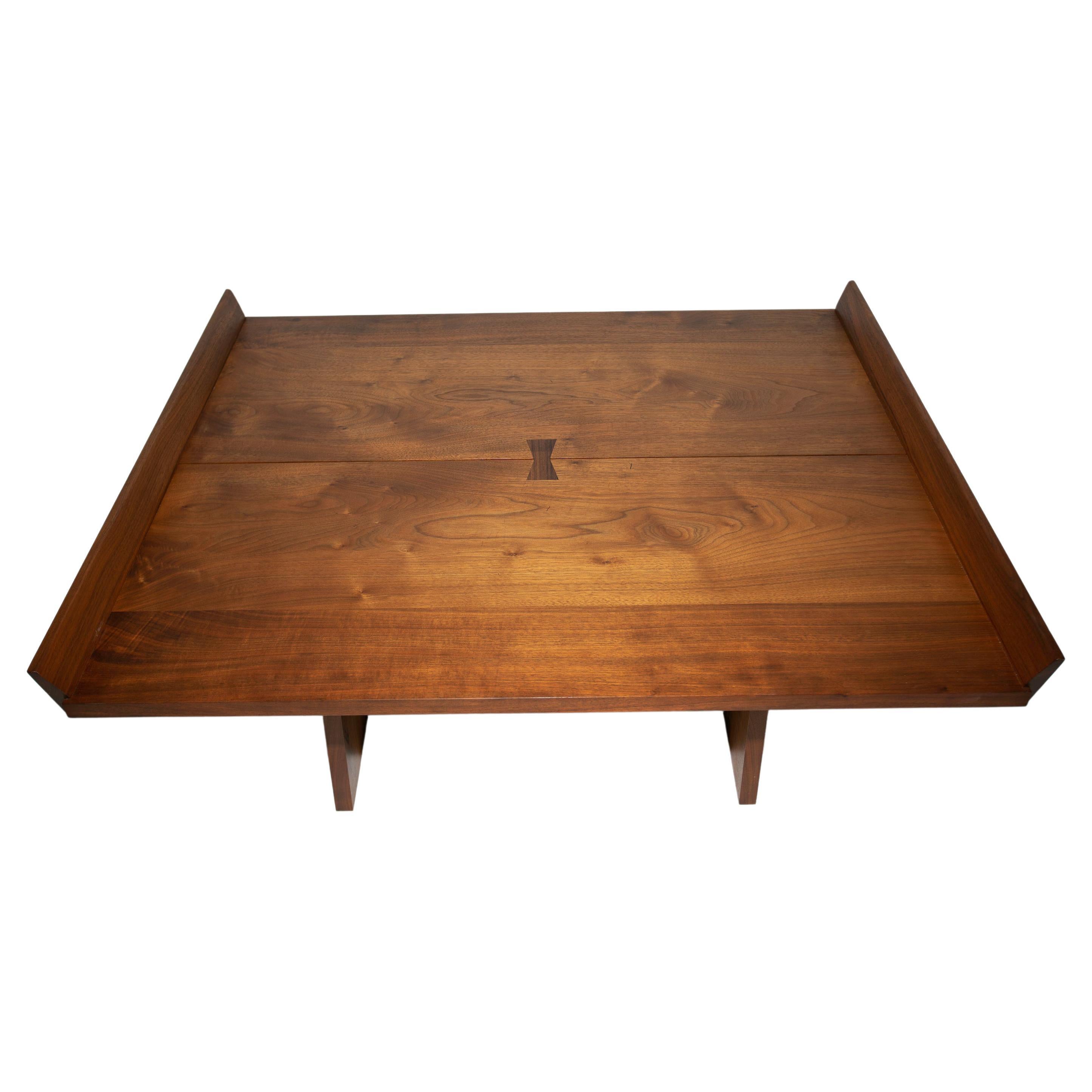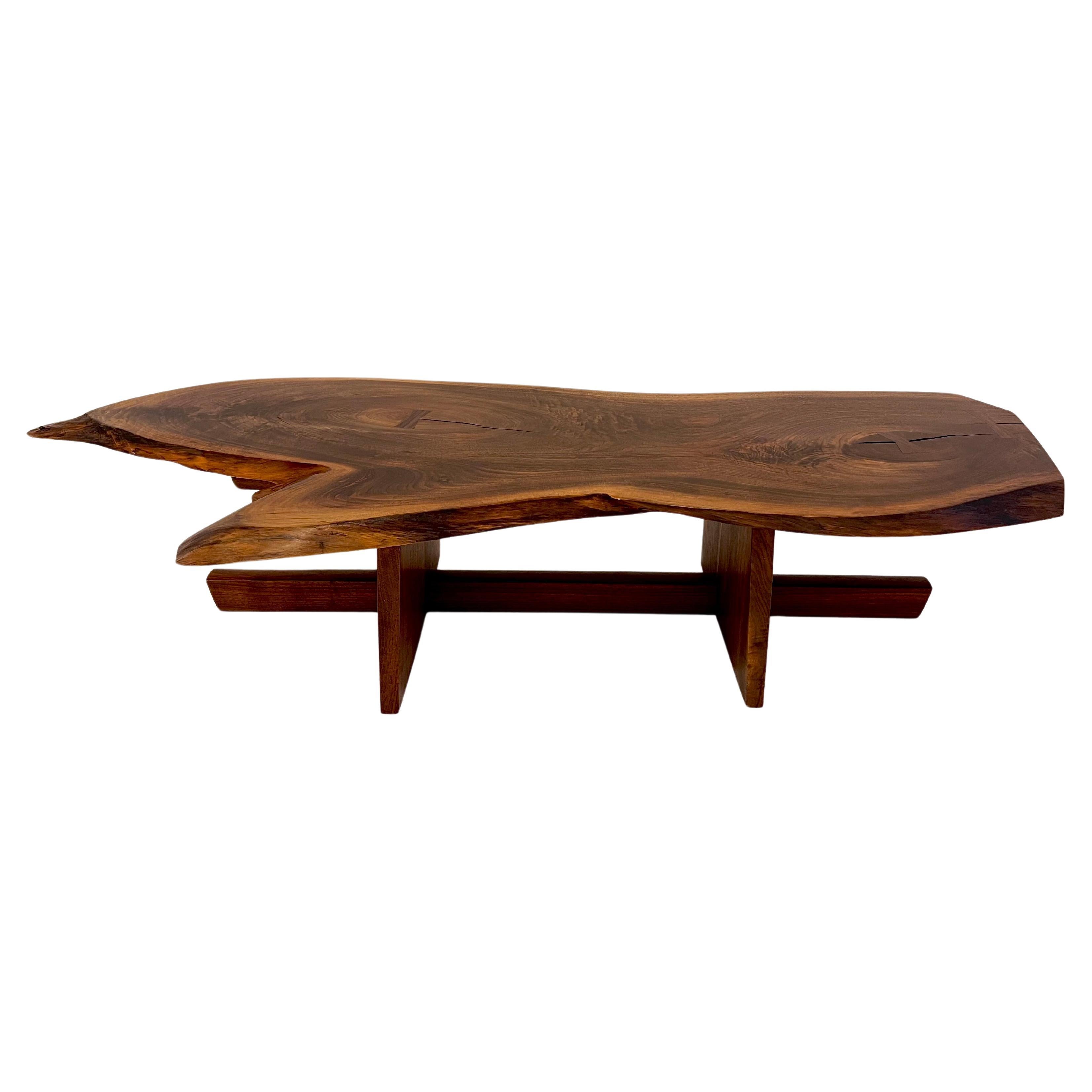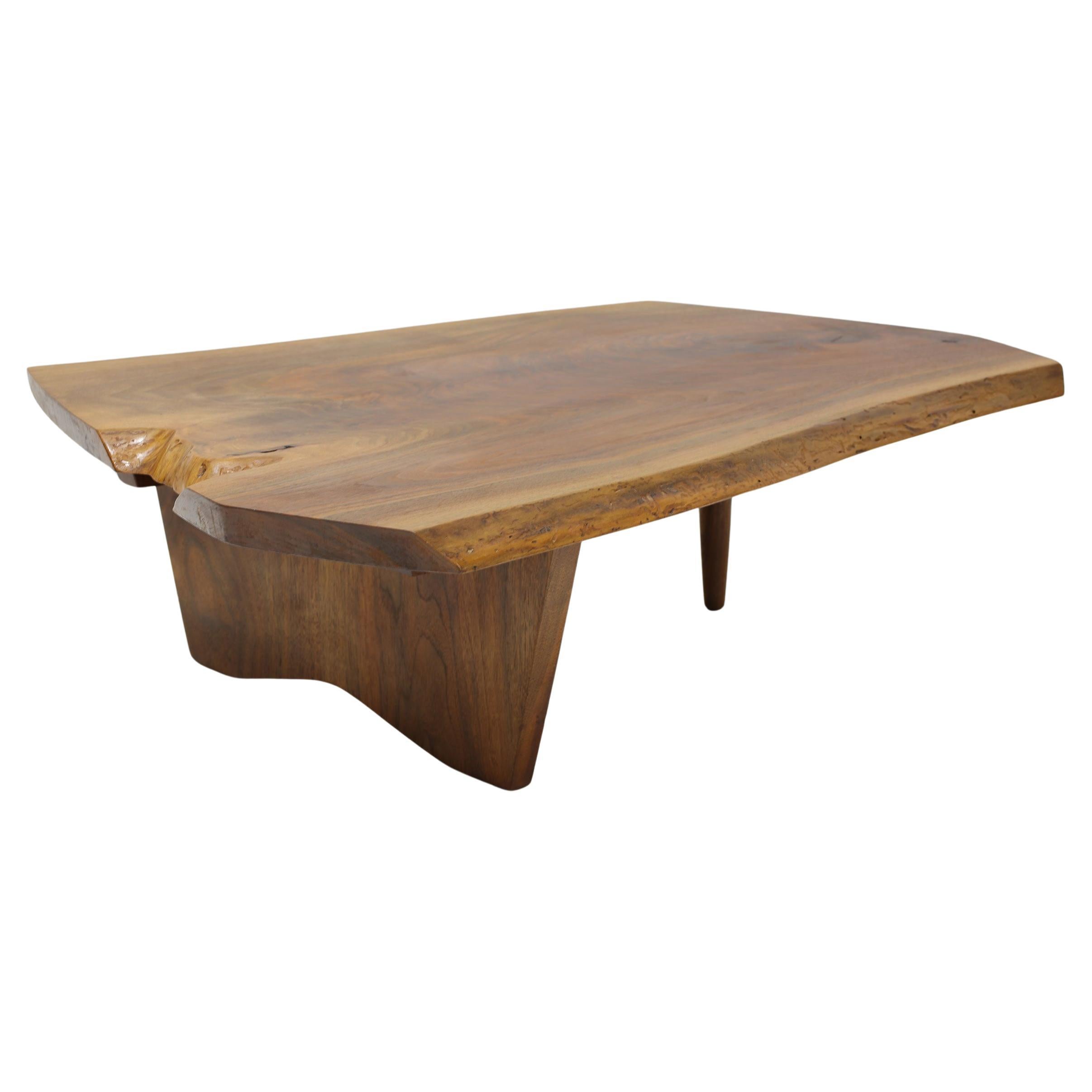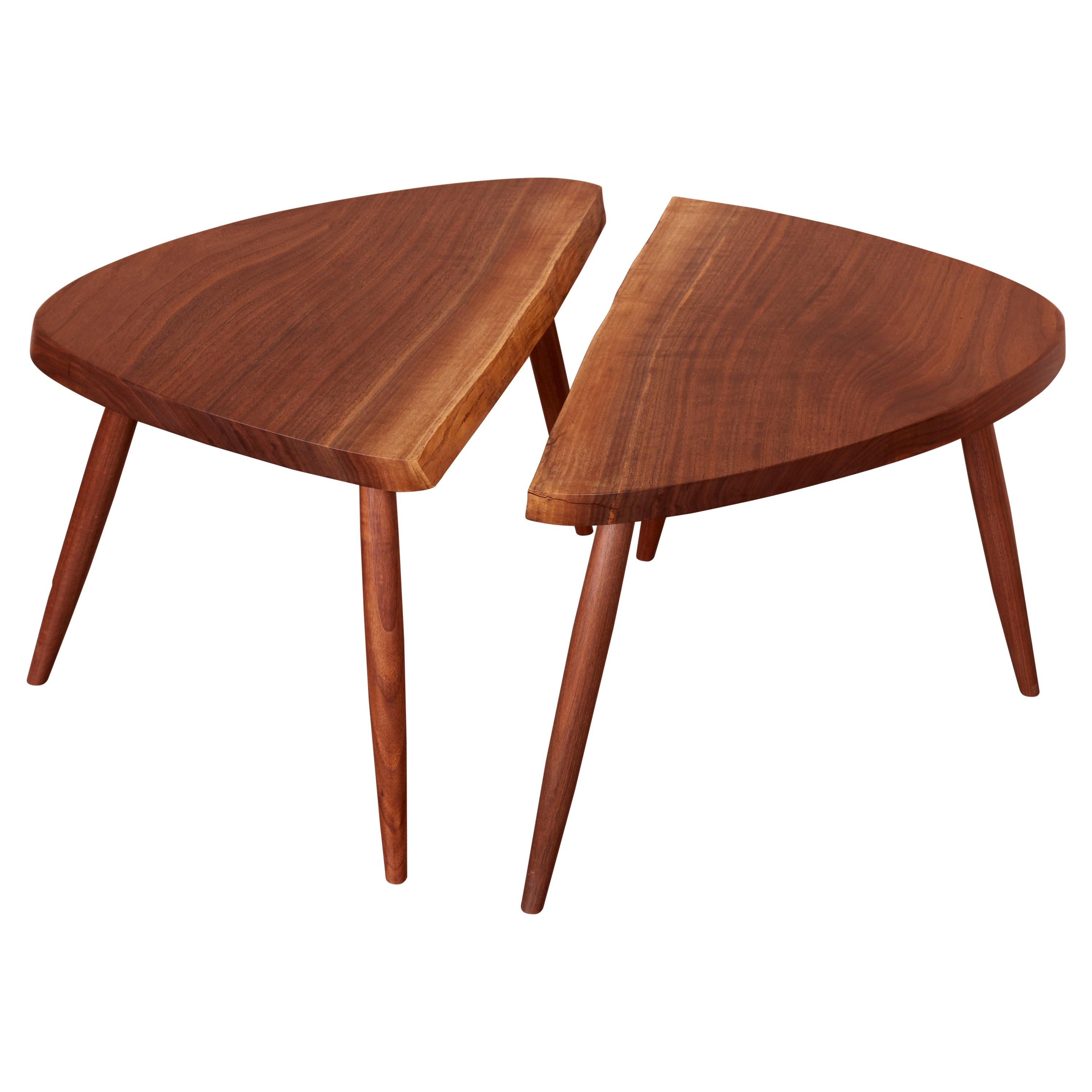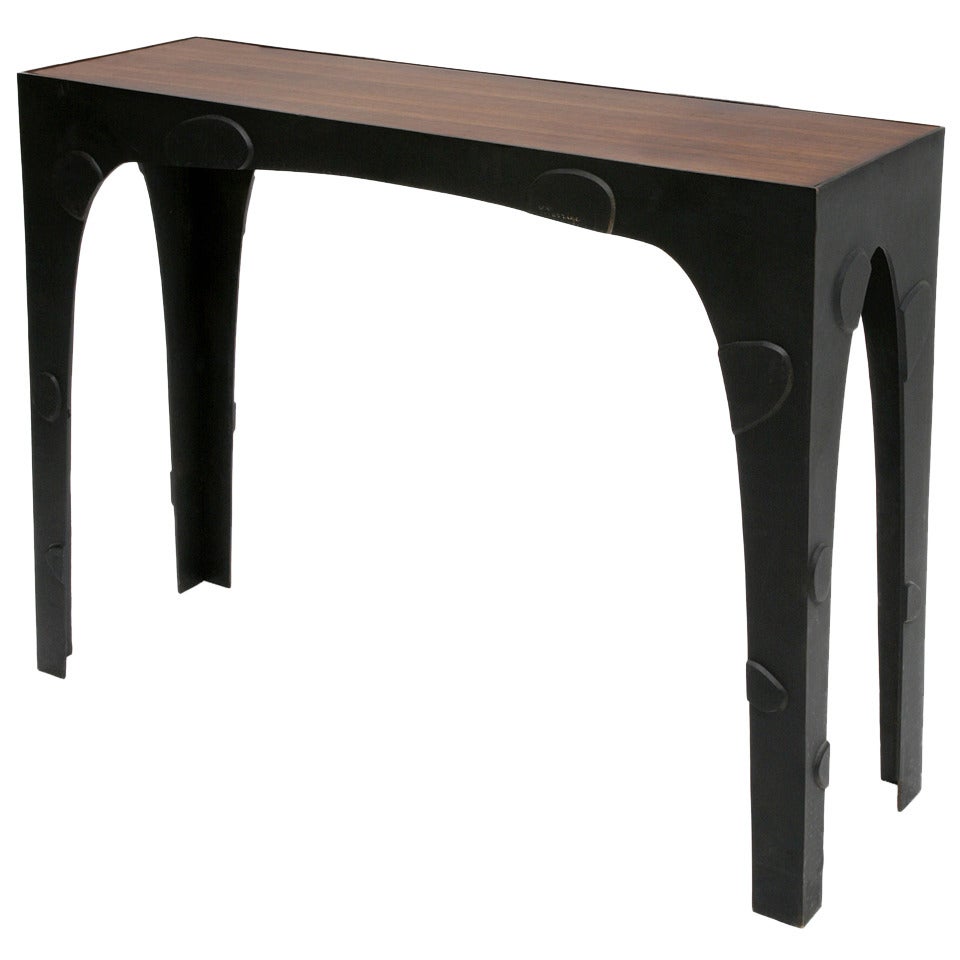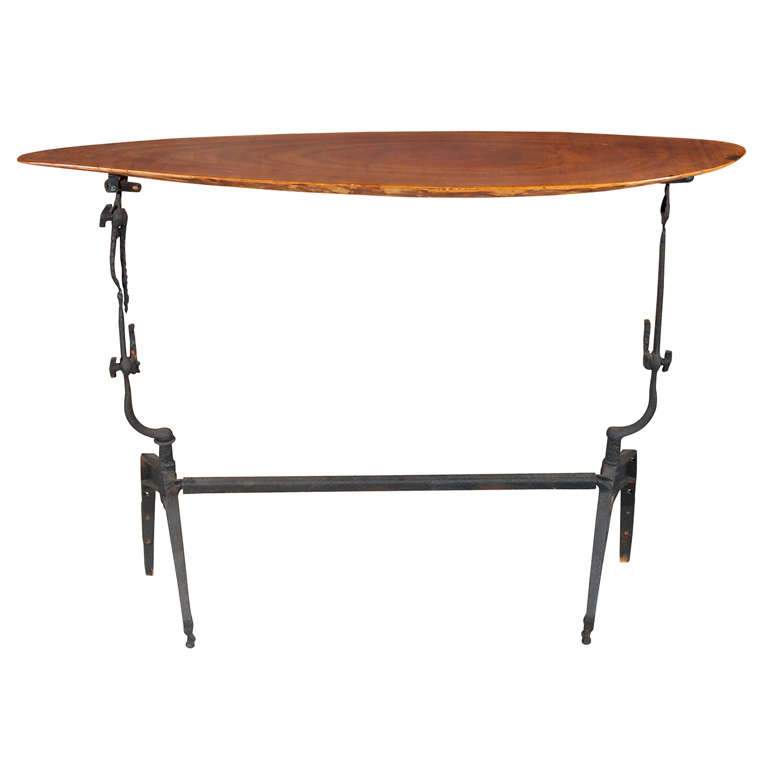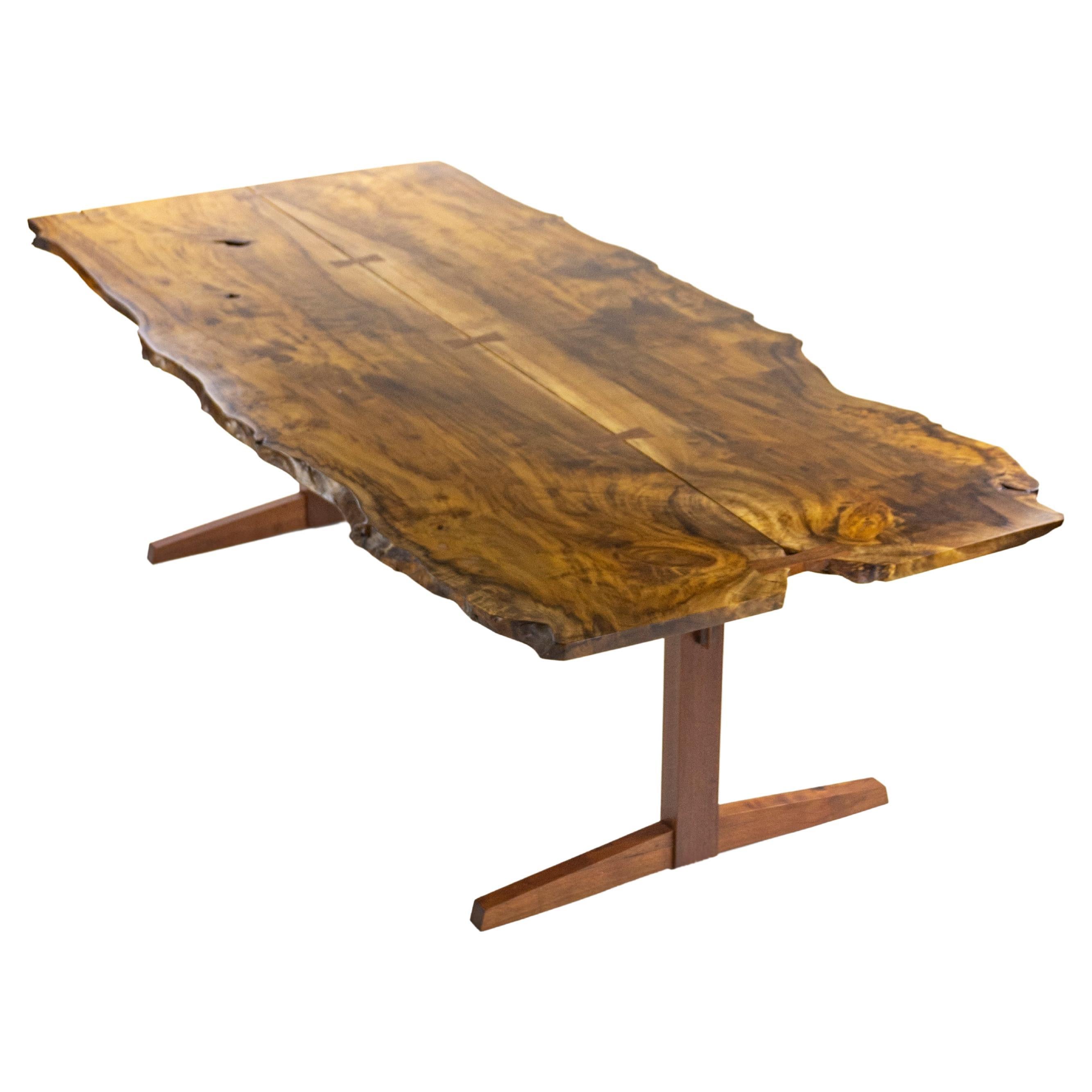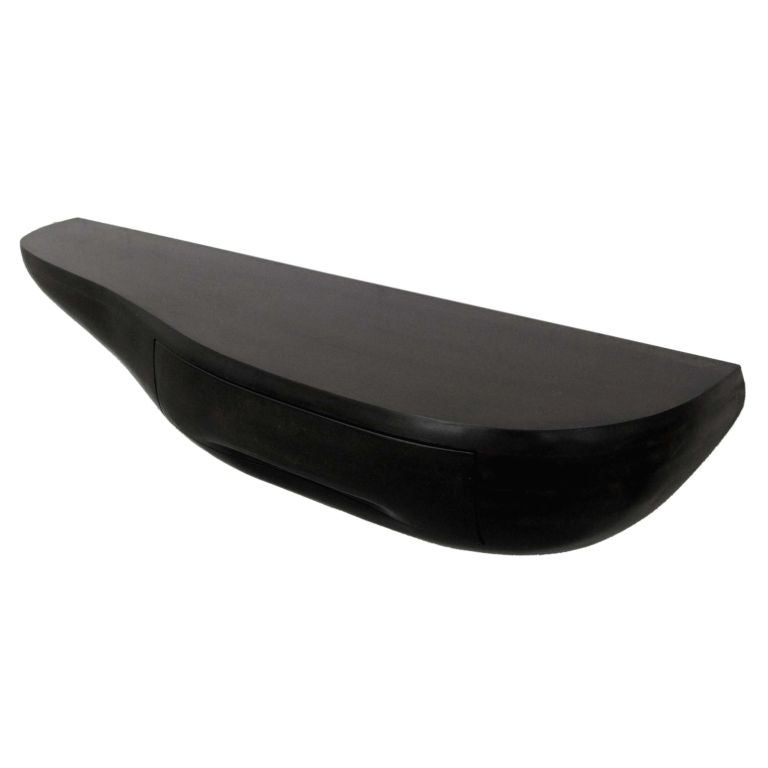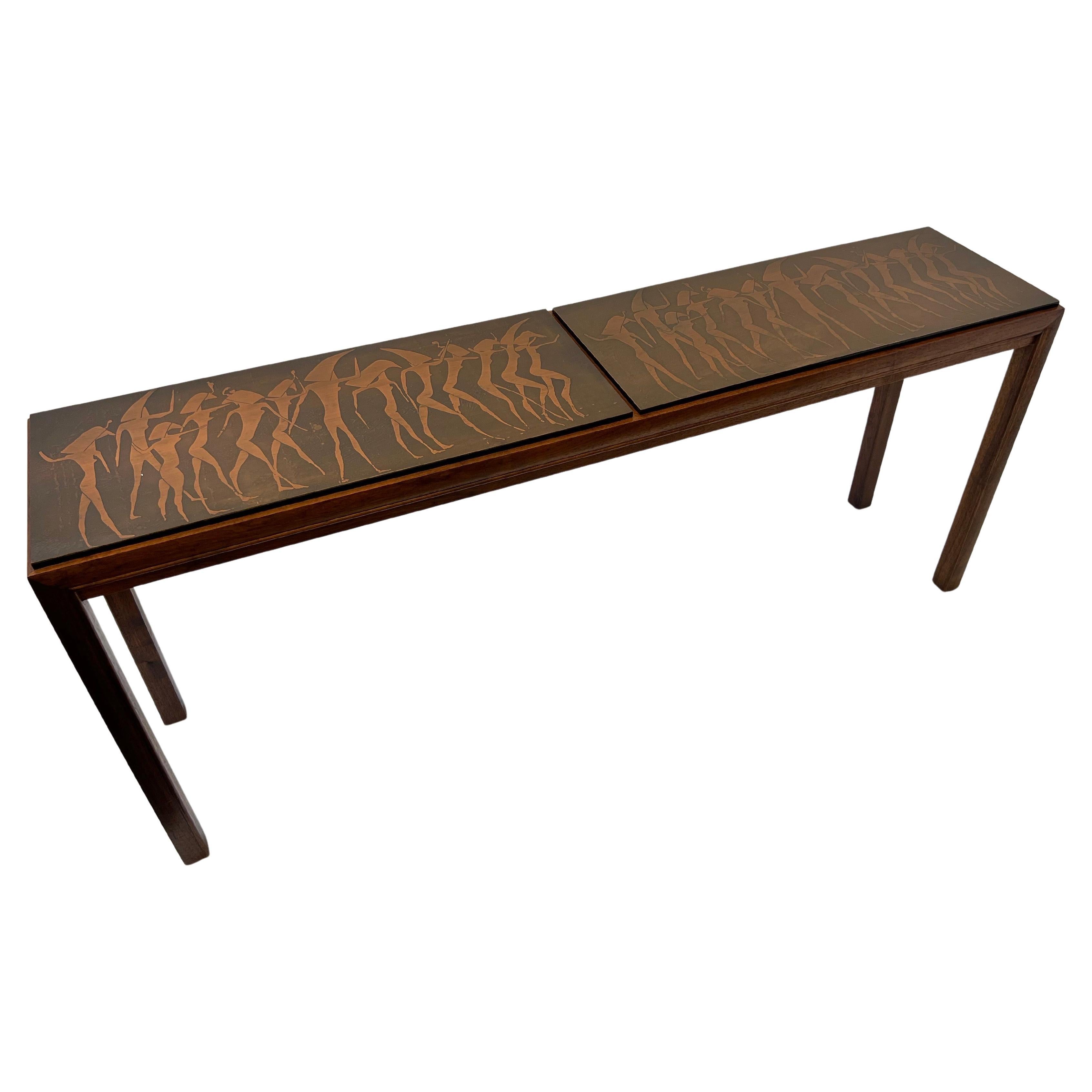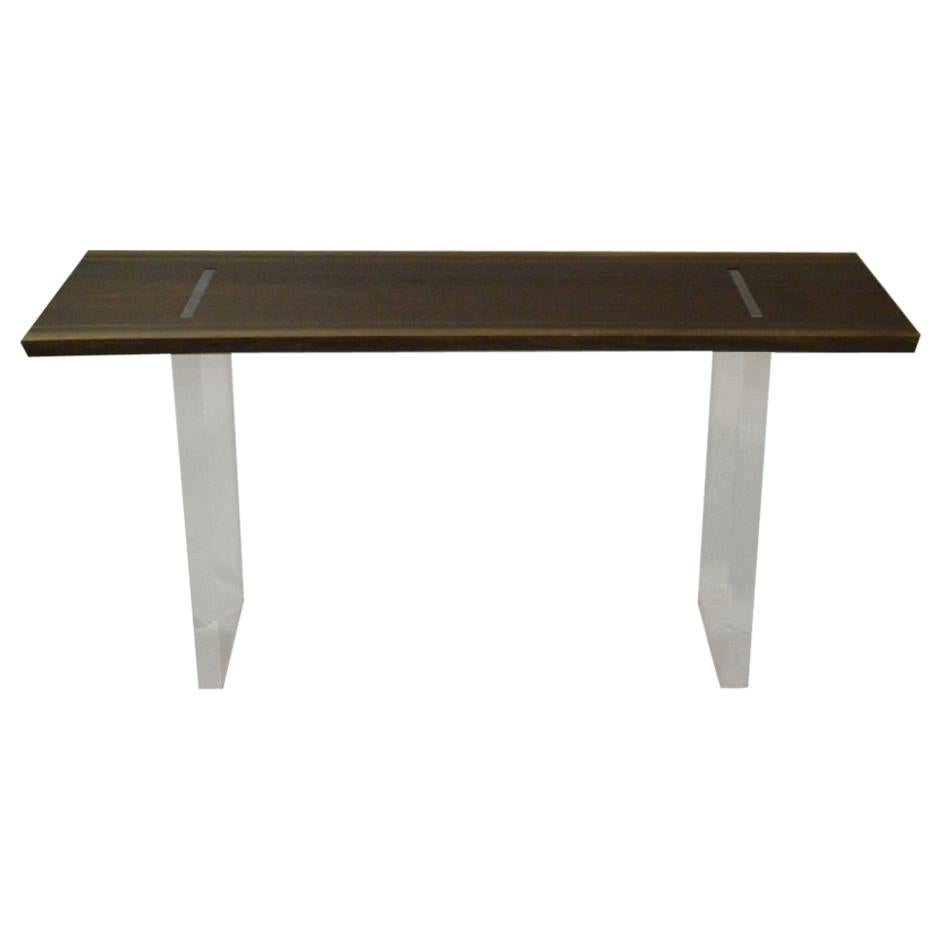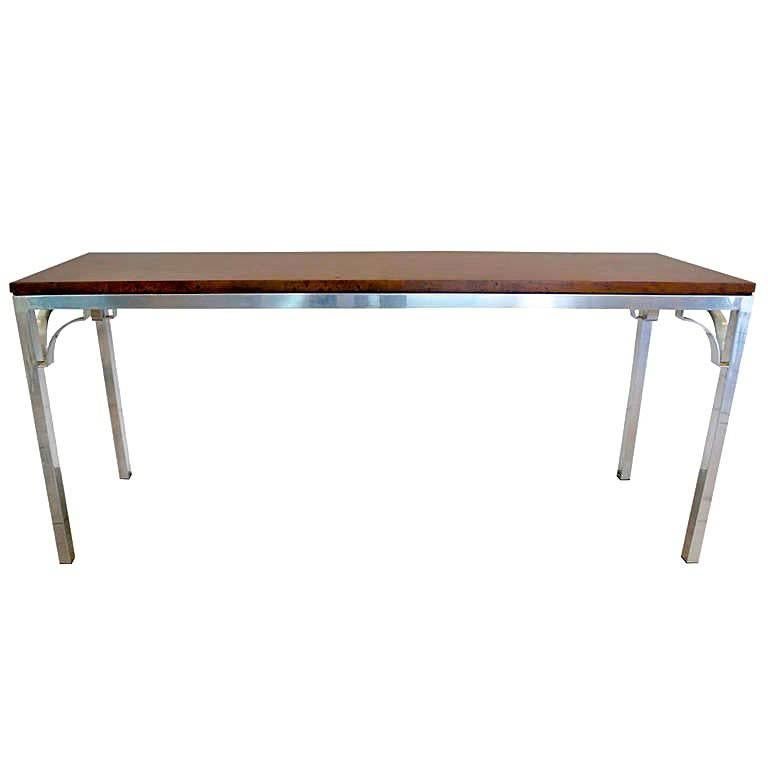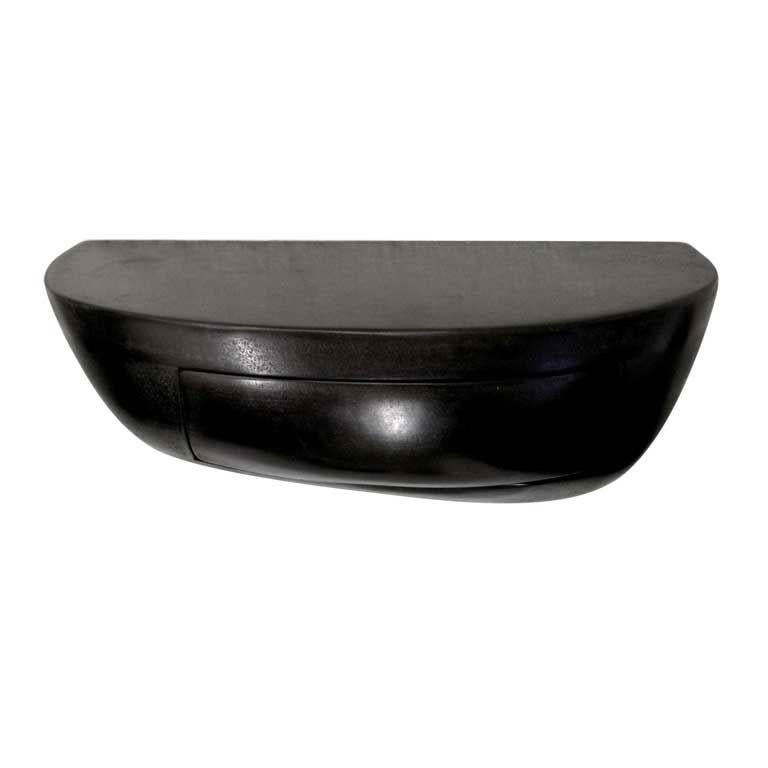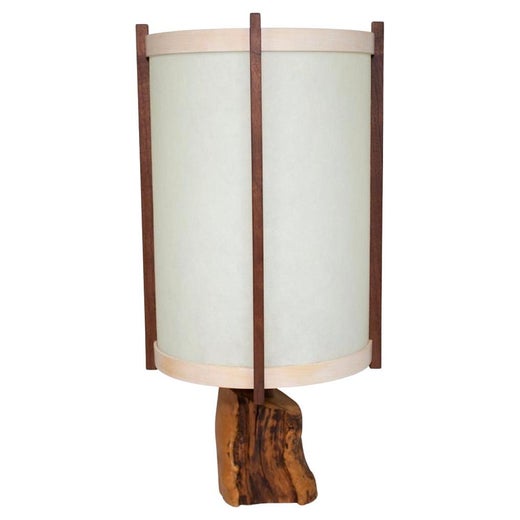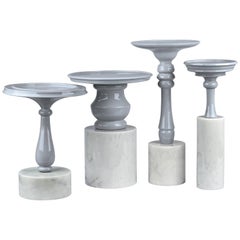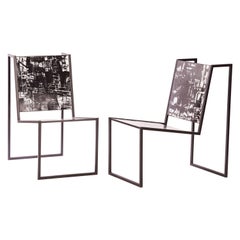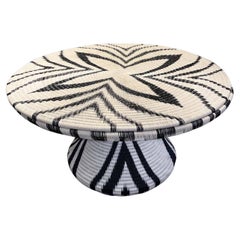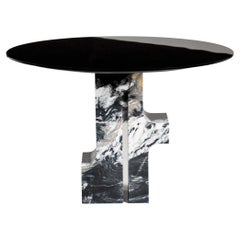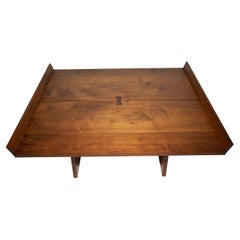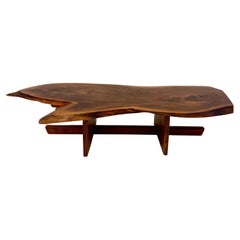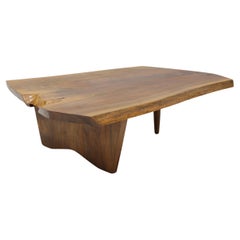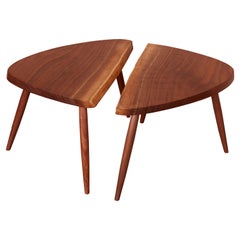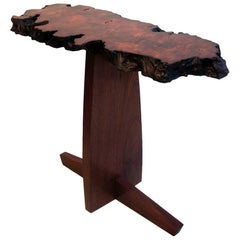
Redwood and Walnut Console Table by Mira Nakashima, 2006
View Similar Items
Redwood and Walnut Console Table by Mira Nakashima, 2006
About the Item
- Creator:Mira Nakashima (Artist)
- Dimensions:Height: 29 in (73.66 cm)Width: 39 in (99.06 cm)Depth: 14 in (35.56 cm)
- Place of Origin:
- Period:
- Date of Manufacture:2006
- Production Type:New & Custom(One of a Kind)
- Estimated Production Time:Available Now
- Condition:
- Seller Location:New York, NY
- Reference Number:1stDibs: LU1834312832152
Mira Nakashima
For nearly two decades, Mira Nakashima worked in the shadow of her legendary father, master woodworker George Nakashima. She never intended to follow in his footsteps, but she was persuaded to join him in his woodworking business after earning a graduate degree in architecture from Tokyo’s Waseda University.
“My father was an architect who went to Harvard, didn’t like it and switched to MIT,” Nakashima explains.
“I went to Harvard and loved it. He encouraged me to study architecture, so I did. I would rather have studied music. I was in a dance group and a choral group. After college, my godmother took me on a tour of Zen monasteries in Japan. I went to live there with an aunt to master Japanese, flower arranging and the tea ceremony. Then I went to Waseda University, learning architecture by the atelier system, where you actually build things. I married a fellow student and we began having children. After we moved to Pittsburgh and had more babies, my father asked me if I wanted to come ‘home,’ promising to build us a house near him. My husband liked the idea, so we went. I began to do part-time work for my father. It was just a job. Then my husband and I parted, so I went to work with Dad. It was never planned.”
That part-time position turned into a full-time job, and when George Nakashima died, in 1990, Mira was faced with a choice: continue the family legacy or shutter the business. As news of her father’s death spread, clients started canceling orders, fearing that the studio’s innovation would wane without him at the helm.
Skeptics proved wrong. Mira Nakashima continued to execute her father’s iconic designs — such as his Conoid chair — while also creating new ones of her own that take advantage of and highlight the unique characteristics and allure of her, and her father’s, favored material.
“Keisho means ‘continuation’ in Japanese,” she says. “I am just as interested in traditional lines, classic proportions and fine wood specimens, but I work out my designs differently. The boards tell you what they want to reveal.”
Shop authentic Mira Nakashima tables, case pieces and more on 1stDibs.
More From This Seller
View All2010s Italian Tables
Carrara Marble
2010s Paraguayan Chairs
Steel
Early 2000s Colombian Side Tables
Natural Fiber
2010s Mexican Dining Room Tables
Onyx
2010s Colombian Side Tables
Copper
2010s Colombian Side Tables
Tin
You May Also Like
Early 2000s North American Tables
Walnut
Late 20th Century American Modern Coffee and Cocktail Tables
Rosewood, Walnut
21st Century and Contemporary American Mid-Century Modern Coffee and Coc...
Rosewood, Walnut
21st Century and Contemporary American Mid-Century Modern Side Tables
Wood, Walnut
Early 2000s French Console Tables
Bronze
Vintage 1960s Unknown Console Tables
Iron
Recently Viewed
View AllRead More
Visionary Women: Mira Nakashima
Four trailblazing creators discuss how they approach their craft — and the transformative influences that continue to guide them. Here, Mira Nakashima tells us how Wendy Maruyama has inspired her woodworking creations.
Hechizoo’s Original Sin Rug Tempts with Shimmering Copper, Tin and Bronze
Embroidered with snakes, turtles, birds and vines, it celebrates a dazzling natural world before the arrival of Adam and Eve.
